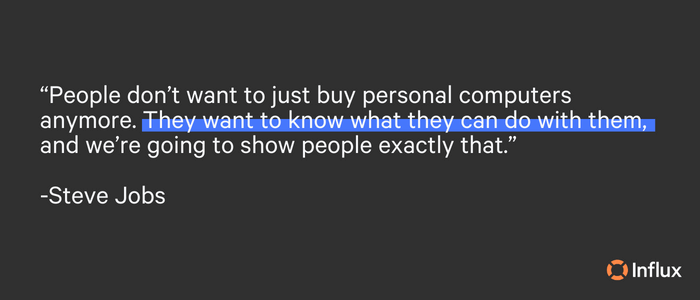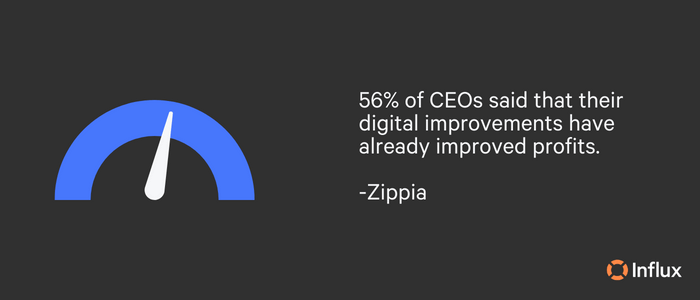In all of human history, nothing has advanced as quickly as digitalization. In recent decades, this significant evolution has led to a rapid increase in the availability of data. Today, digitalization is driving the development of new technologies, which are transforming the way businesses operate and interact with customers.
Leaders in the digital age must possess a unique set of skills and qualities that enable them to navigate the rapidly changing digital landscape. What does that mean exactly? Let’s dive in.
What does leadership in the digital age look like?
When 19th-century French painter Paul Delaroche first saw a photograph, he famously declared, “From today, painting is dead!” Of course, painting is still very much alive, and this was a little far-fetched, but it accurately captures some of the concerns around technology. The existence of creativity in a world immersed in technology often feels like a battleground, but digitalization has the power to improve aspects of the creative process rather than stifling it.
Leadership is the driving force that pushes individuals to reach their potential, empowers teams to find innovative solutions, and provides calculated guidance that outperforms competitors. Leaders need to be strategic, proactive, and forward-thinking. As a people-oriented approach, leadership in the digital age boils down to pairing creativity with digital technologies for innovative solutions.
Becoming a leader in the digital age
Have a clear vision
A vision is a distinctive and specific view of the future that is usually connected with strategic organizational advances. Without a clear vision, leaders are more likely to become sidetracked, miss opportunities, and face additional challenges when dealing with the unknown. Immersed in a digital world, it’s easy to lose sight of the things that matter. A clear and well-communicated vision is vital for teams to comprehend their leader’s expectations.
Good business leaders create a vision, articulate the vision, passionately own the vision, and relentlessly drive it to completion. - Jack Welch
Your vision should rest on a foundation of hope with aspirations to build something bigger and meaningful that is in alignment with company goals. In communicating this vision, it should be inspirational and spark passion in workers to reach their full potential. Digital-age leaders must continually seek out new opportunities and be ready to pivot quickly, often at the last minute, all while maintaining focus on their direction and ultimate objective. Most importantly, this includes incorporating tools and leveraging digital innovations that enhance the pursuit of the company’s vision.

Don’t sell products, appeal to desire
The hard truth is that people don’t really care about products, they care about what the product will do for them. Let’s take Apple, for example. Apple completely revolutionized the music and consumer electronics industry. Today, their smartphones have fanatics lining up outside stores every September to spend hundreds on that year’s model. Do Apple’s smartphones function differently from Android or other competing smartphones? No, not really. Their features are relatively similar and the only real difference shines through in Apple’s design. As quoted by Apple Inc.’s founder, Steve Jobs…
Design is not just what it looks like and feels like. Design is how it works.
The next logical question is to ask: why are Apple fans so loyal? And the answer is because Apple drives vision. Consumers have a desire to appear a certain way, and Apple has mastered the art of stoking the fire of customer desire.
Your business has a completely unique story that allows you to reach consumers with your vision in mind. Top leaders in the digital age know that this vision is about pairing creative solutions with the tools and technology available to bring something new to the table that inspires and feeds into consumer desire. Even if this is simply in your messaging, appealing to desire and not simply selling products is what makes brands stand out in the digital age.

Data-driven decision making
Not only does data reveal what’s working and what isn’t, but it is transparent and provides accountability. The capacity to translate data into action sets a business apart from competitors. In aiming to create a data-driven organization, it’s important to cultivate individual measurement habits so that each member of a team is analyzing for themselves their own progress and performance. According to McKinsey,
32% of companies have altered longer-term strategies in response to changes brought about by data and analytics.
The numbers don’t lie. Leaders looking to achieve their goals should use data as a guide to gain a better understanding of operations, customers, and market, and to use this information to make informed decisions that will improve performance.
Master the art of scaling
Companies can make more efficient, data-driven decisions and accelerate their team’s workflow faster than ever before by employing the right tactics. Scaling in the digital era has become increasingly important for growing businesses to stay competitive and meet the demands of consumers. Scaling a business entails laying the groundwork for your company’s development. It means being able to expand without hindrance. Businesses looking to scale their operations should plan, fund, and incorporate the right technology with flexible partners.

Have a learning mindset then, relearn
In our mobile-dominated world, the digital landscape is rapidly evolving, constantly. Being responsive to digital innovation requires learning and relearning to stay in-the-know with the latest trends and forecasts. Influential leaders in the digital age adapt to and utilize these new, innovative tools to their advantage.
According to the World Economic Forum’s Future of Jobs Report, 50% of all employees will need reskilling by 2025 as adoption of technology increases, and 40% of workers will require reskilling in six months or less.
Upskilling and reskilling are unavoidable in the digital age as teams look to fill in the gaps. This necessitates not only finding the right tools but also setting aside mandatory time to learn them and become familiar with their features. Proper training of software can save time in the long run and those in a learning state of mind will continue to be leaders in the digital era.
Flexible support anytime, anywhere
In an unpredictable future, it’s vital to have reliable support. Influx solutions are designed to be flexible with your changing needs. Our month to month pricing allows you to stay flexible with fully managed support operations, across all channels and timezones. Grow your business with support solutions!

